Recently I told you about my games, which I like very much. Now I would like to tell you about one of their virtues, their music.
The music is varied and everyone can find something that catches their fancy. I’m not including all the songs from the game, you know, how many tunes there are for one game, I’ve created this article to share with you the music I like. In addition, you’ll be able to find something you like) So, enjoy listening.
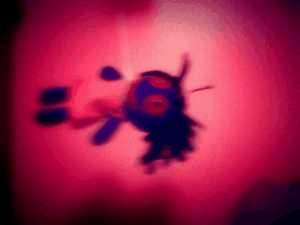
Music from the game Ib (2012)
The music from Ib immerses the player in a unique horror atmosphere, where each piece seems to carry not just sound, but mysteries. The composer of the game, Koji Yamada, uses unusual yet captivating melodies that, despite their eerie context, can attract and enchant the listener.
The primary instruments include the xylophone, piano, and guitar. These instruments create a mysterious atmosphere, their sounds flowing smoothly into one another, capturing attention and evoking the sense that somewhere hidden is a puzzle or a riddle to be solved. The melodies, played on these instruments, seem both simple and complex, as if they guide you through the corridors of a world full of secrets and enigmas.
The tone of the music varies from light, almost carefree themes to darker and more unsettling ones, pulling you in and making you feel the presence of something mystical. These compositions perfectly complement the atmosphere of the game, where everything is surrounded not only by visual, but also by auditory mysteries, intensifying the feeling of uncertainty and anticipation.
Each melody seems to build its own labyrinth, one you want to enter despite the sense that something greater is hidden behind it. The music of Ib perfectly highlights the atmosphere of horror, mystery, and intrigue, drawing the player into a unique experience of the game.
Music from the game Angels of Death (2016)
The music from Angels of Death perfectly matches its dark, tense, and psychologically complex atmosphere. Composed by Hiroshi Sano, it has a unique ability to convey anxiety, horror, and grim emotions, not just as background music but as a key element that enhances the player’s experience.
The soundtrack uses a range of instruments, from unsettling synthesizers to more classical ones, like piano, violin, and electric guitar. These instruments create a sense of uncertainty and danger, emphasizing the fear and despair experienced by the characters. The sounds are often sharp, abrupt, with intense accents, which adds to the feeling of tension and incompleteness in the music.
The melodies in the game vary from dark and ominous to more emotional and penetrating. This is especially noticeable during moments when the music becomes more melodic, creating a contrast with the darker and scarier scenes, intensifying the drama and tragedy. In these moments, the music becomes more than just a backdrop; it serves as a full-fledged narrator, expressing the inner world of the characters and their complex emotions.
One of the standout features of the Angels of Death soundtrack is its ability to balance the atmosphere of horror with deeper psychological moments, making the music not just a part of the game but an essential element that enhances every twist of the plot. Listening to these compositions, you can feel how the music itself becomes part of the nightmare, where each step hides a new threat or mystery.
Overall, the music in Angels of Death not only fits perfectly with the gameplay but also stands out on its own as a powerful element that captures, terrifies, and evokes strong emotions, creating an unforgettable atmosphere of tension and fear.
Music from the game Forest of Drizzling Rain (2013)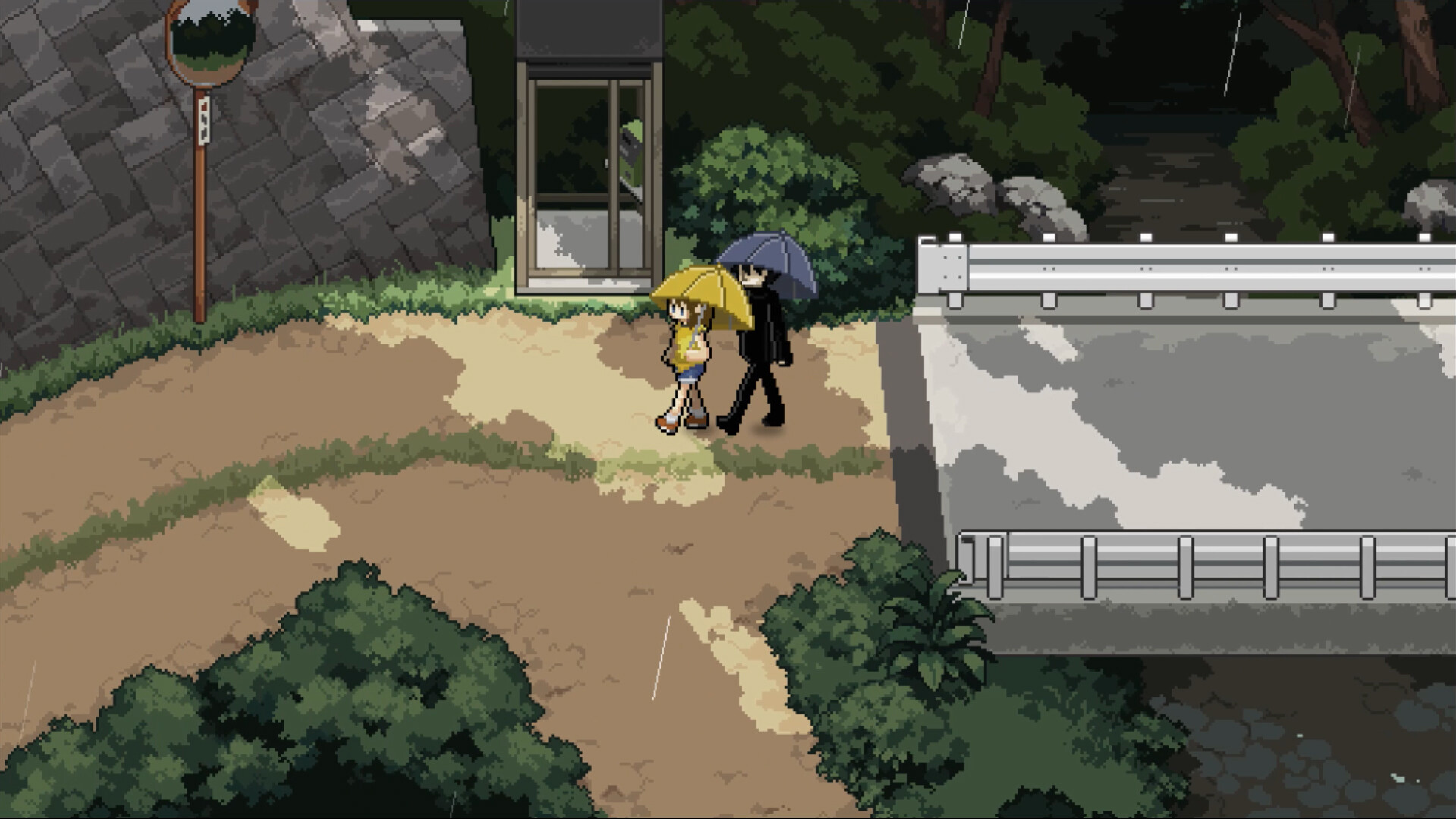
The music from Forest of Drizzling Rain stands out with its atmospheric and melancholic qualities, making it a key element in creating the game’s unique and mysterious ambiance. The soundtrack, composed by Kouri, perfectly complements the dark and mystical world in which the story unfolds.
Musically, the game features calm yet tense melodies, balancing tranquility with unease. Instruments like piano, strings, and synthesizers are often used to create subtle, almost imperceptible textures. The melodies are smooth and soft, but at times they shift into darker and even eerie tones, enhancing the atmosphere of uncertainty and the feeling that something dreadful may be approaching.
One of the standout features of the music is how it evokes the theme of rain, which is a key motif in the game. Light, transparent sounds, reminiscent of raindrops, blend with those that convey a sense of cold loneliness and loss. These compositions draw the player in, as if pulling them into a rainy forest filled with secrets and strange events.
The Forest of Drizzling Rain soundtrack not only sets the mood for the game but also immerses the player in deep emotional states, where every chord and pause creates a sense of hopelessness and mystery. The music becomes an essential way of expressing the characters’ inner worlds, their emotions, and fears.
Overall, the music from Forest of Drizzling Rain is a masterfully crafted soundtrack that not only fits the horror genre but also enhances the emotional experience of the game, leaving a lasting and meaningful impression.
Music from the game Sally Face (2016)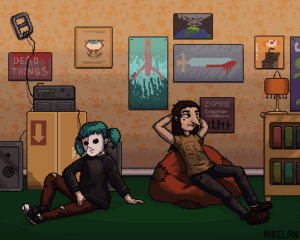
The music from Sally Face perfectly captures the unique, mysterious, and occasionally eerie atmosphere of the game. The soundtrack, composed by Aivi & Surasshu, blends a wide range of genres and instruments, creating a memorable and immersive audio experience. The sounds vary from calm and melodic to dark and unsettling, fitting the game’s style and storyline.
One of the primary instruments featured in the soundtrack is the guitar, along with elements of synthesizers and keyboards. These sounds evoke both a sense of nostalgia and unease. At times, the music takes on a psychedelic feel, reflecting the strange and psychological tension experienced by the game’s characters.
The melodies in Sally Face are often minimalistic, where each chord and change in tempo enhances the feeling of inner conflict and uncertainty. Despite its apparent simplicity, the music plays an essential role in conveying the characters’ emotions, particularly when paired with the visual elements and storyline. The composer also uses sharp changes in the melodies, creating a sense of unpredictability and tension in certain scenes.
The Sally Face soundtrack possesses an amazing ability to balance light, even relaxing tones with disturbing and haunting notes. This makes the music a crucial element in immersing the player, heightening the game’s atmosphere of oddity and mystery, where not everything is as it seems at first glance.
Overall, the music from Sally Face is not just background accompaniment but an integral part that helps create the game’s unique mood, intensifies its psychological impact, and adds depth to each moment.
Music from The Witcher 3: Wild Hunt (2015)
The music from The Witcher 3: Wild Hunt plays a significant role in creating the rich, immersive world of the game. Composed by Marcin Przybyłowicz, Mikolai Stroinski, and a team of talented musicians, the soundtrack perfectly complements the game’s vast landscapes, intense battles, and emotional moments. The music blends orchestral, folk, and ambient elements to evoke a wide range of emotions, from the epic to the intimate.
The soundtrack is deeply inspired by the Slavic and medieval traditions, using a variety of instruments such as the violin, flute, dulcimer, and bagpipes, alongside more modern orchestral instruments. These create an atmosphere that feels both ancient and timeless, capturing the game’s setting in the war-torn, mythical world of the Continent.
In the more serene moments, the music often features soft melodies, with delicate strings and ambient sounds, which allow the player to truly appreciate the beauty of the game’s world, from the lush forests to the snow-covered mountains. These calming tracks offer a contrast to the darker and more intense compositions heard during moments of combat or conflict.
The battle music in The Witcher 3 is intense and powerful, using bold brass and percussion to drive the adrenaline of high-stakes fights, while the haunting and melancholic tracks are used to highlight the deep, emotional moments in the story. One of the standout pieces is “Priscilla’s Song,” which is performed by the in-game character and adds a deeply emotional layer to the narrative.
The music also helps to highlight the mood of different regions and events in the game, adapting to the environment, whether it’s the epic, sweeping landscapes of the Skellige Isles, the ominous forests of Velen, or the bustling, dangerous streets of Novigrad. Each piece works to enhance the atmosphere, drawing the player deeper into the world of Geralt of Rivia.
Overall, the music of The Witcher 3: Wild Hunt is more than just a soundtrack; it’s a vital part of the experience, enhancing the narrative and the player’s emotional connection to the story. With its powerful, atmospheric compositions, it remains one of the standout features of the game.
Music from Assassin’s Creed Origins (2017)
The music from Assassin’s Creed Origins plays a crucial role in immersing players in the ancient world of Egypt. Composed by Sarah Schachner, the soundtrack combines traditional Egyptian instruments with modern orchestral and electronic elements, creating a dynamic and atmospheric sound that complements the game’s setting and narrative.
The soundtrack draws on the rich musical heritage of ancient Egypt, using instruments such as the oud, lyre, and Egyptian percussion, alongside modern orchestration and subtle electronic textures. These traditional elements evoke a sense of history, transporting players to the time of the Ptolemaic dynasty, while the contemporary touches bring a sense of excitement and energy to the game.
In the calmer moments, the music is often minimalistic and ambient, with the use of soft strings and wind instruments to reflect the vast and tranquil desert landscapes or the ancient temples. These tracks provide a sense of serenity and awe, allowing players to appreciate the grandeur and beauty of Egypt’s architecture, wildlife, and landscapes.
The battle themes, however, are intense and sweeping, with powerful brass, strings, and percussion to emphasize the action and combat. The music builds in intensity during key fight sequences, reinforcing the sense of struggle and danger as the protagonist, Bayek, confronts various enemies and challenges.
In addition to the battle and ambient music, Assassin’s Creed Origins also features more emotional and dramatic tracks that underscore pivotal moments in the storyline, heightening the impact of character interactions and key plot points. The use of music in these moments enhances the storytelling, making the emotional beats of the game feel more resonant.
Overall, the music of Assassin’s Creed Origins is a vital component of the game’s immersive experience, skillfully blending traditional and modern elements to create an unforgettable soundtrack. It helps to enhance the historical atmosphere of the ancient world while keeping the energy and excitement high throughout the game.
Music from Layers of Fear (2016)
The music from Layers of Fear is a key element in building the psychological horror atmosphere of the game. Composed by Arkadiusz Reikowski, the soundtrack uses subtle and unsettling melodies to evoke a sense of dread, tension, and mystery, perfectly aligning with the game’s themes of madness and the unknown.
The music is often minimalistic, with eerie soundscapes created through a combination of haunting strings, piano, and ambient noise. These elements help to amplify the feeling of unease and the sense that something is lurking just beyond perception. The score often features dissonant chords, sudden shifts in tempo, and long, drawn-out silences, which make players feel on edge, as if the world around them could shift at any moment.
The piano plays a central role in many tracks, with its deep, melancholic tones adding to the feeling of isolation and despair. This use of the piano is particularly effective in quiet moments when the player is exploring the disturbing, ever-changing mansion. The haunting melodies are complemented by occasional bursts of discordant, jarring sounds that break the tension, adding an element of surprise and making the horror more visceral.
The soundtrack also includes more atmospheric, ambient music, with a focus on subtle background noise that adds to the disorienting feeling of being in a shifting, unpredictable world. These soundscapes help to blur the line between reality and hallucination, mirroring the protagonist’s deteriorating mental state.
In moments of heightened tension or terror, the music becomes more intense and dramatic, often using full orchestration to reflect the protagonist’s descent into madness. The dramatic shifts in the score mirror the game’s narrative, amplifying the emotional and psychological impact of each moment.
Overall, the music in Layers of Fear is expertly designed to complement the psychological horror elements of the game. The unsettling melodies, combined with ambient noise and moments of intense orchestral bursts, create an immersive and nerve-wracking experience, leaving players with a lingering sense of unease long after they put down the game.
Music from The Vanishing of Ethan Carter (2014)
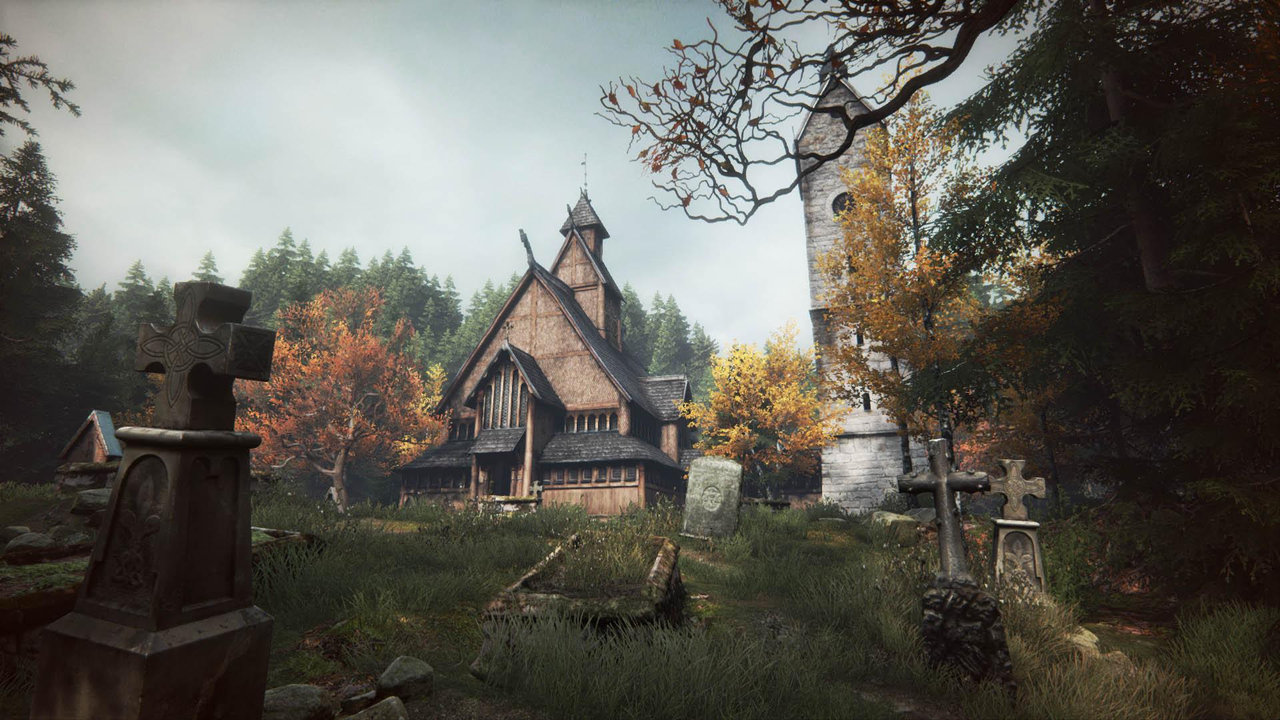
The music in The Vanishing of Ethan Carter is a significant part of the game’s immersive atmosphere, expertly composed by the talented musician, Marcin Przybyłowicz (known for his work on The Witcher 3: Wild Hunt). The soundtrack beautifully complements the game’s eerie, mysterious, and melancholic tone, enhancing the feeling of exploration and suspense as players journey through a hauntingly atmospheric world.
The music uses minimalistic and ambient elements, often drawing from piano, strings, and soft percussive instruments to create a sense of calm and introspection. These quieter compositions invite the player into the world of the game, with their melancholic undertones reflecting the sadness and sorrow of the narrative. The subtle orchestration also works to create a sense of distance and isolation, which is key to the experience of exploring the mysterious countryside and abandoned locations in the game.
As the story unfolds, the soundtrack gently intensifies during moments of mystery or tension, incorporating more dramatic strings and fuller orchestral arrangements. This shift in tone mirrors the gradual uncovering of secrets and the emotional depth of the investigation. The music responds dynamically to the gameplay, often swelling during significant story moments and leaving quiet spaces during exploration, where the environment and the player’s thoughts are in the spotlight.
One of the standout features of the soundtrack is its ability to create a sense of place. The music is deeply tied to the game’s setting, with its flowing melodies and atmospheric sounds evoking the natural beauty of the game’s fictional world. The haunting melodies, combined with the sound of wind, birds, and the occasional rustling of trees, make the environment feel alive, while also imparting a sense of unease and foreboding.
The score’s calm yet haunting nature draws players into a reflective mood, mirroring the game’s central themes of loss, mystery, and the supernatural. Each piece serves to reinforce the feelings of solitude and confusion that the protagonist, Paul Prospero, experiences as he unravels the mystery of Ethan Carter’s disappearance.
In conclusion, the music of The Vanishing of Ethan Carter is a perfect fit for the game’s atmosphere, blending melancholic beauty with suspenseful and eerie elements. Its haunting, minimalistic compositions immerse players into the world, heightening the emotional and psychological impact of the story, and leaving a lasting impression long after the game ends.
Music from Dear Esther (2012)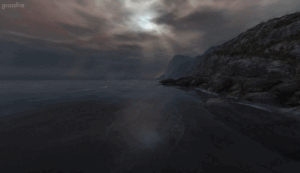
The music from Dear Esther is an essential element in creating the game’s deeply atmospheric and emotional experience. Composed by Jessica Curry, the soundtrack blends ambient, minimalist, and orchestral elements, enhancing the narrative’s reflective, melancholic, and introspective nature. It is perfectly suited to the game’s tone of solitude, memory, and personal discovery as players explore a desolate island while uncovering fragments of a poignant story.
The score of Dear Esther often employs quiet, minimalistic compositions, using soft piano, strings, and subtle electronic sounds to create a tranquil, almost ethereal atmosphere. These delicate melodies evoke a sense of calm and isolation, inviting the player to slow down and immerse themselves fully in the surroundings. The music is introspective, almost like a soundtrack to the protagonist’s internal thoughts, as he reflects on past events and the mystery of his journey.
During moments of emotional intensity or revelation, the music swells, incorporating richer orchestration and deeper tones. These shifts are not jarring, but rather feel like a natural progression of the unfolding story. The minimalistic motifs build gradually, subtly enhancing the emotional depth of the game. The music mirrors the game’s pace, often fading into silence at times, only to return when the narrative demands it. This dynamic interplay between silence and sound contributes to the game’s contemplative and haunting quality.
The soundtrack also features an ethereal, ambient quality that serves to create a strong sense of place. The music and ambient sounds blend seamlessly with the natural soundscape of the island, such as the wind, waves, and distant echoes. This union of music and environmental sounds amplifies the feeling of being in an isolated, almost otherworldly space, where time seems to slow down, and the player can focus entirely on the journey ahead.
Overall, the music of Dear Esther plays a crucial role in shaping the emotional experience of the game. The minimalistic compositions, combined with subtle shifts in mood and rich orchestration, reflect the game’s themes of loss, memory, and existential contemplation. The soundtrack helps to draw players into the world of the game, providing a deeply immersive and emotional backdrop to the exploration of the island and the unraveling of its mysteries. The music, much like the game itself, is hauntingly beautiful, lingering in the mind long after the journey has ended.
Music from Kholat (2015)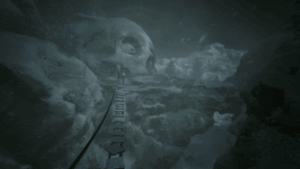
The music in Kholat plays a crucial role in establishing the intense, suspenseful atmosphere of this psychological horror game, which is based on the real-life Dyatlov Pass incident. Composed by Piotr Musiał, the soundtrack is a blend of ambient, experimental, and orchestral elements, creating a tense, eerie soundscape that complements the game’s haunting and mysterious story.
The music in Kholat is atmospheric, with a focus on creating feelings of isolation, fear, and unease. It uses minimalistic motifs, such as distant, echoing piano notes, soft strings, and ambient noise, to create a haunting and otherworldly atmosphere. The score is often sparse, allowing for moments of silence to build tension and give the player space to reflect on the eerie environment.
When the gameplay intensifies, the music shifts to incorporate darker, more dramatic orchestral elements. The use of heavy percussion, dissonant strings, and unsettling, low-frequency tones enhances the sense of danger and impending doom. These moments of musical intensity are paired with sharp sound design, making the atmosphere even more immersive and unsettling.
In the quieter moments, the music is more ambient, with subtle, atmospheric sounds like wind, creaking wood, and faint whispers, all contributing to the feeling of being alone in a vast, cold wilderness. This contrasts with the moments when the music grows more intense, reflecting the protagonist’s growing fear and paranoia as the mystery of the Dyatlov Pass unfolds.
One of the most distinctive features of the Kholat soundtrack is its ability to evoke a sense of dread through silence and tension-building musical motifs. The music doesn’t always provide immediate answers or resolutions, but instead amplifies the uncertainty and fear surrounding the strange occurrences in the game. The haunting soundscapes leave a lasting impression, often lingering in the background as players explore the desolate, snow-covered terrain.
Overall, the music of Kholat serves as an integral part of the game’s narrative and atmosphere, heightening the psychological horror experience. With its ambient, experimental sound design and orchestral flourishes, the soundtrack amplifies the game’s themes of mystery, isolation, and fear, drawing players deeper into the chilling world of the Dyatlov Pass incident.
